‘Trick the cancer’: Ian Frazer’s real hope ‘sniper cells’ could cure childhood cancer
Exclusive. He changed the life of women with a vaccine, now Queensland’s Professor Ian Frazer is putting his name to a extraordinary new project to fight childhood cancer.
News
Don't miss out on the headlines from News. Followed categories will be added to My News.
Queensland’s Professor Ian Frazer is known (among many other accolades) for developing the world’s only cancer vaccine, his modesty, and lilting, Scottish brogue.
Frazer, who was born in Glasgow, and moved to Australia in 1981, spent years developing the human papillomavirus (HPV) vaccine, which protects women and girls against cervical cancer.
Along with the late Dr Jian Zhou, the two colleagues developed the vaccine at the University of Queensland (UQ) for 15 years before it was patented and released as Gardasil in 2006.
Today, the vaccine is credited with saving millions of female lives globally, and is delivered in hundreds of countries worldwide. It is also available, although the take-up is smaller, for males.
Now Frazer, and his world-famous vaccine, is set to once again change lives; this time those of children with cancer.
This week, the Ian Frazer Centre for Children’s Immunotherapy Research will open. It’s the first of its kind in Australia, the first time Frazer, 69, has lent his name to a project and it will be funded, in part, by the funds the University of Queensland receives in ongoing royalties from the Gardasil vaccine.
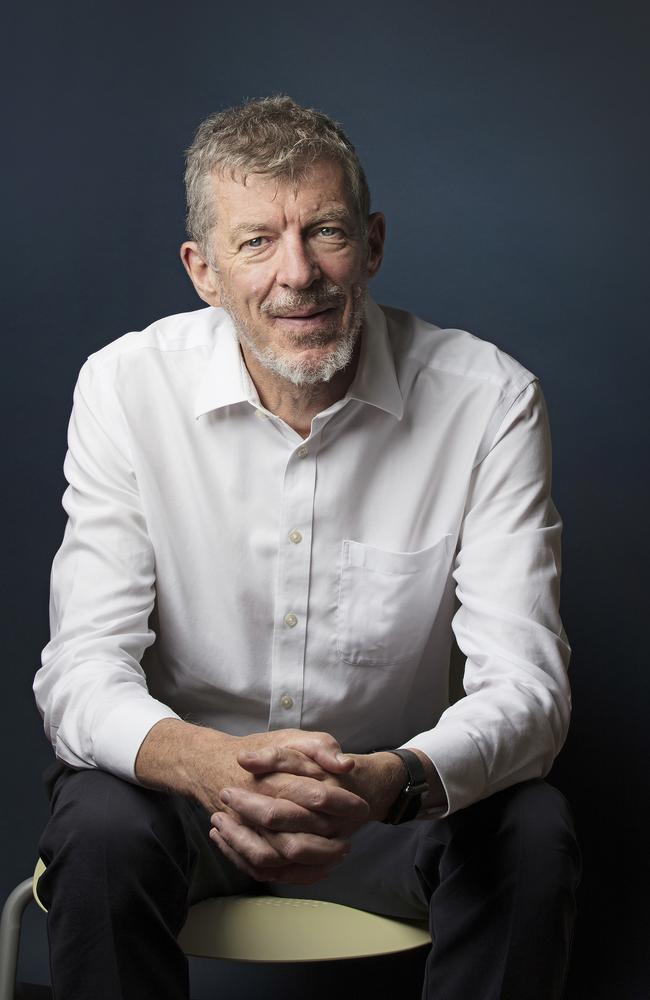
The centre, under the guidance of Frazer, will use a multi-discipline approach, with three teams working across the University of Queensland, the Queensland Institute of Medical Research (QIMR) and the Queensland Children’s Hospital.
Frazer says “the great hope” behind the project is to deliver immunotherapy from the research stage to the laboratory to a child’s hospital bed as safely, quickly and effectively as possible. The immunologist and former Australian of the Year well knows the ravages that cancer and its traditional treatments of chemotherapy and radiology have on children.
It is the driving motivation behind the famously modest Queenslander’s decision to lend his name to the project.
A scientist of international standing, Frazer knows his attachment will hopefully attract ongoing funding, with the Children’s Hospital Foundation already committing $7.5m over the next five years.
“I’m very glad to give my name because children’s cancer, while rare, is so devastating. Nobody expects their child to die of cancer, but it happens. I’m very pleased to be a part of this, it’s such a wonderful collaboration and I have real hope that this will produce something that rapidly cures some cancers in children. Now that would be a red letter day.”
Immunotherapy is a relatively new, but highly promising field of treatment for cancer, but thus far its usage has been largely limited to adults. “It’s the children’s time,” Frazer says simply. “What I want to see is the progress we have made with adults for the last 10 years applied to children.”
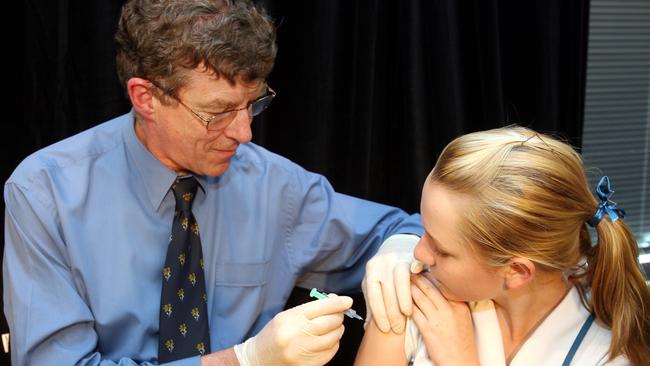
The simplest way to describe immunotherapy is that (unlike chemotherapy which uses more of a scattergun approach, destroying not just the cancer cells in the body, but other cells as well) immunotherapy uses cells from the patient’s immune system to specifically target and destroy the cancer cells only. At least one benefit of this targeted approach is that it is often far less brutal than traditional methods.
“We sort of trick the cancer,” Frazer says.
“Basically we develop cells from the child’s immune system, and then arm them with something outside of the body (modifying them in a test tube) by giving them a receptor (usually an antibody) that can see, or detect, the cancer cells. Then we put them back in the patient using an infusion with the modified cells. What you are doing is teaching the immune system to fight the cancerous cells itself, and harvesting the body’s own cells to do it.
“We have done this quite effectively with childhood blood cancer, which is a relatively easy delivery into the blood itself, so we want to expand our knowledge to treat solid organ tumours, and there are some challenges there.
“We need to work out smart ways and a whole range of new tricks for that delivery. We need better treatments for children with these sorts of solid organ cancers because if surgery doesn’t cure it, it is just very, very difficult to get to it effectively.
“So some of the areas the centre will be looking at is getting our targeting right, so the killer T cells can get to where they need to go. We are also looking at infecting the cancer cells (of the tumour) with a specific virus, so that they look like an infection, tricking the (receptor) cells into targeting the virus.
“Another thing we are looking at is to trick the bloodstream to go through the tumour itself, by making the bloodstream more open to letting the T cells out to kill what they need to kill. How you do that is if you treat the cancer to make it look inflamed, you’ve provided a reason for the T cells to leave the bloodstream (something they are usually reluctant to do).”
One way of looking at immunotherapy is also the way the fight to survive cancer is often described – as a battle. We say someone is battling cancer, or that they have lost their long battle with cancer; immunotherapy is making sure the soldiers who are being sent into that battle are armed with the best possible – and most precise – weapons. If chemotherapy and radiation are the blanket bombs of cancer treatment, then immunotherapy is the highly trained sniper on the rooftop, picking off very specific targets.

The other challenge is one every parent of a child with cancer knows. Time. Time to rest between treatments. Time to recover from nausea, hair loss, pain, trauma, broken bones, and hearts. Time to catch up on school work and friends. But most of all, many kids with cancer need time on their side to receive and fully benefit from some of the treatments available that might help them.
Clinical trials of new drugs can buy kids with cancer that time, but the protocols and eligibility requirements for joining these trials can be complex and frustrating.
Frazer hopes that by having a dedicated centre, with between 25 to 50 staff members working across three areas: research (UQ), clinical (QIMR) and delivery (Children’s Hospital) a child’s eligibility to join a trial will be both assessed and delivered quickly.
This is especially important, he says, for doctors and their patients who have exhausted all their known treatment options.
“We will be able to publish on our website what we are working on, and doctors will be able to access this for their patients,” Frazer says.
“We will be making it very clear what we are doing because one of the most important things with clinical trials is to get them started quickly and finished quickly.
“Even if a trial originates, for example, in China or Canada, we can help speed up the recruitment process for it.”
This part of the Centre’s work is vital. Because the heartbreaking reality is that nearly three children a week in Australia die of cancer. Kids who have, to use the aforementioned analogy, lost their long and brutal battle. The kids who run out of time. Kids like Charlotte Horwood-Young.

Charlotte loved, in no particular order, chicken nuggets, Katy Perry, statement jewellery, rainbows, unicorns, mermaids, open topped convertibles, storytelling, dragon slaying, piano playing and Harry Potter.
And if she could have, Charlotte Horwood-Young told her parents not long before she passed away at 13 years old from one of the rarest forms of cancer, she would have “turned magic” like the boy wizard with the lightning scar, and fixed herself.
Failing that, Charlotte told her oncology team, if they didn’t find a cure for the cancer that had blighted her childhood and ravaged her body for almost six years, she would come back to Earth “as a demonic hedgehog” to haunt them all.
That was how flame-haired, feisty, funny Charlotte rolled, the kid with a one-in-a-million cancer, doing things her way until the day she died in her parents’ arms at home on April 15, 2019.
That day, that long, unimaginable day when her parents sat on either side of her and told her how much they loved her, how proud they were of her, and that it was okay to let go, was the same day she was due to start a promising new immunotherapy treatment. For Charlotte Horwood-Young, it was a day too late.
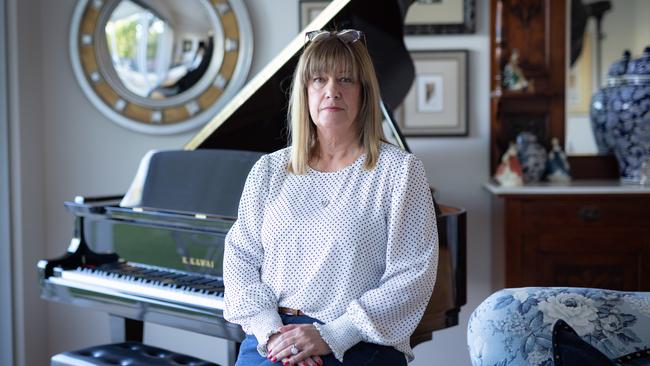
Charlotte’s parents, Michelle Robson-Young and Michael Horwood (the couple are now divorced) are telling their daughter’s story to support Frazer and the new centre in his name.
They believe that had it existed when Charlotte was diagnosed years ago, she might not only have survived, but also might have been spared some of the more brutal moments of her treatment, especially the times when, as a little girl, frightened and in pain, they had to hold her down while her chemotherapy drugs were injected through a portacath. Or tell her that, despite everything, the cancer had returned. Again. Or watch her miss out on weeks of school, playdates, sleepovers, secret sharing and all the other things her classmates at Brisbane’s St Aidan’s school were enjoying. Or all that came after the 2013 September school holidays, and a hug that changed everything.
“Charlotte leant over one night to hug me, and I felt this lump in her back,” Michelle says.
“I pulled up her pyjama top but I couldn’t see anything, so I asked her to bend over again, and there it was. You could only see it at a bend of about 90 degrees.”
Concerned, Michelle rang the family doctor and the next day Charlotte was given an X-ray and ultrasound, and eventually referred to the oncology department of the Children’s Hospital.
Charlotte was diagnosed with an inoperable and extremely rare, small, blue cell tumour known as Ewing’s sarcoma – so rare the odds of getting it are less than one in a million.
For the next five and half years, Charlotte and her parents would divide their time between their home, the Children’s Hospital and Wesley Hospital in what Michelle describes as a “Bermuda Triangle of pain”. At eight years old, Charlotte underwent some 14 months of “very aggressive”, intermittent chemotherapy and radiation, the little girl losing a third of her body weight during the treatment.
“Charlotte largely bore it all with humour and grace,” Michelle recalls, “but losing her beautiful hair was hard on her because it was very much part of her identity.”
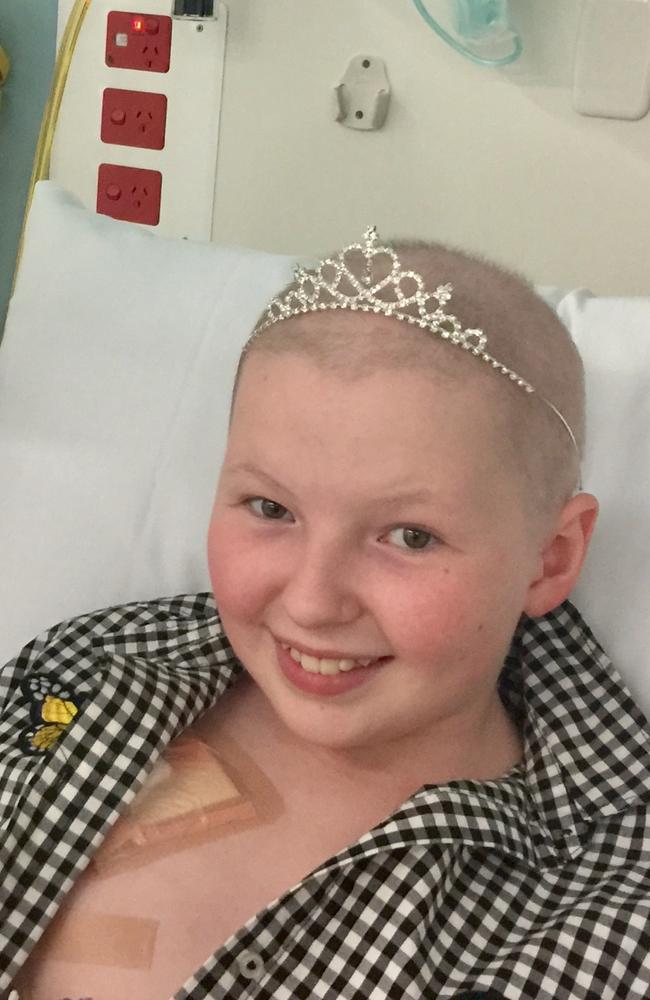
The treatment, while brutal, was initially effective, buying Charlotte almost two and a half years of cancer-free time. About a month after “ringing the bell” at the Children’s Hospital (a traditional celebration to mark the end of treatment) the family celebrated with a trip to Canada in December 2014.
For the first time telling her daughter’s story, Michelle smiles.
“It was amazing, she learnt to ski, we went ice skating on Lake Louise, we totally spoiled her with these beautiful ski jackets and sparkly boots and it was the most magical time. We went to her big sister Megan’s (Michelle’s daughter from her first marriage) wedding to her partner Drew in New York.
“When we came home Charlotte went back to school, she was learning Italian and Japanese and playing piano, she was just so curious about everything. She wanted to do it all.”
Michelle looks at a beautiful, gleaming baby grand piano in her living room, a present to the musically gifted Charlotte from the Make-a-Wish Foundation, its keys now lie silent, no dancing hands to make it sing.
In March 2017, doctors found a small tumour growing on Charlotte’s spine – this time, operable. Charlotte, now 11, who always wanted to have her voice heard in her treatment options, agreed to surgery.
“They were very happy with her margins, she had six weeks off school and we took her to Hayman Island for a holiday,” Michelle says. Memory making. Moments of happiness. Charlotte lining up her impressive nail polish collection. Charlotte driving a car down their home’s long driveway (at that stage the family lived on a property at Pullenvale, an idyllic rural area on the outskirts of Brisbane), Charlotte making money by charging everybody for haircuts.
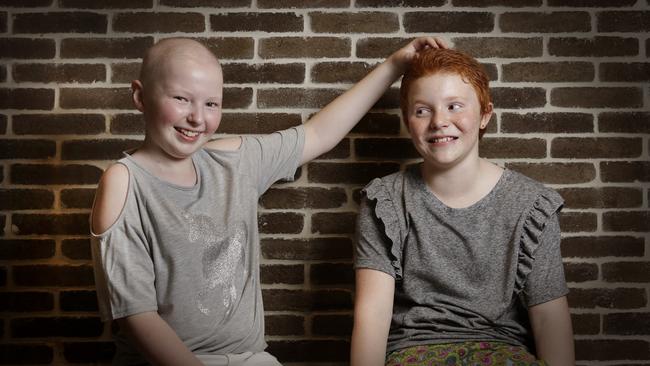
Everything was going so well, the doctors told Charlotte, “Things can be normal again. You can be normal again. You can play netball.” Charlotte’s response? “But can I please not do cross-country still? (she hated cross country), her mother laughs.
And then in October of that year, Charlotte began to cough, an annoying, persistent bark that never quite went away.
Sent for a chest X-ray with suspected pneumonia, she was found to have metastatic lung disease.
“Her lungs were riddled with it,” Michelle says quietly.
“She had surgery that drained 600ml of fluid from them, she did chemo, she did 36 rounds of radiation, she did more chemo, and she fought very, very hard for 18 months to stay here.”
And in between the fighting, her parents were looking, starting their own worldwide search for something, anything, that might help their daughter. “Michael would sit at home with two computer screens open, looking up clinical trials, looking up the medical thesaurus,” Michelle says.
“We commissioned a doctor in Singapore to do a worldwide search. He came back with 54 treatments, we narrowed it down to six, but Charlotte was ineligible for all of them.”
For Michelle, fighting for her daughter’s life seems particularly unfair because she has been down this road before. She had a son from her second marriage, a little boy called Brenton, who died aged six from a massive cardio arrhythmia. Losing two children is, as she says, almost too much to bear.
“I carry the grief for both of them.”
For his part, Michael Horwood, 55, an executive general manager in aged care, remembers that time of trying to save his daughter’s life as “going down a lot of dry gullies”.
“You can only do so much as an amateur but we were determined to help. There’s just so much information out there, there’s not a human brain that can sift through it all. I just remember trawling and trawling through it, but mostly I remember Charlotte in her very Charlotte way coming out to see me every now and again and saying, ‘Are you ready to give me a briefing?’”
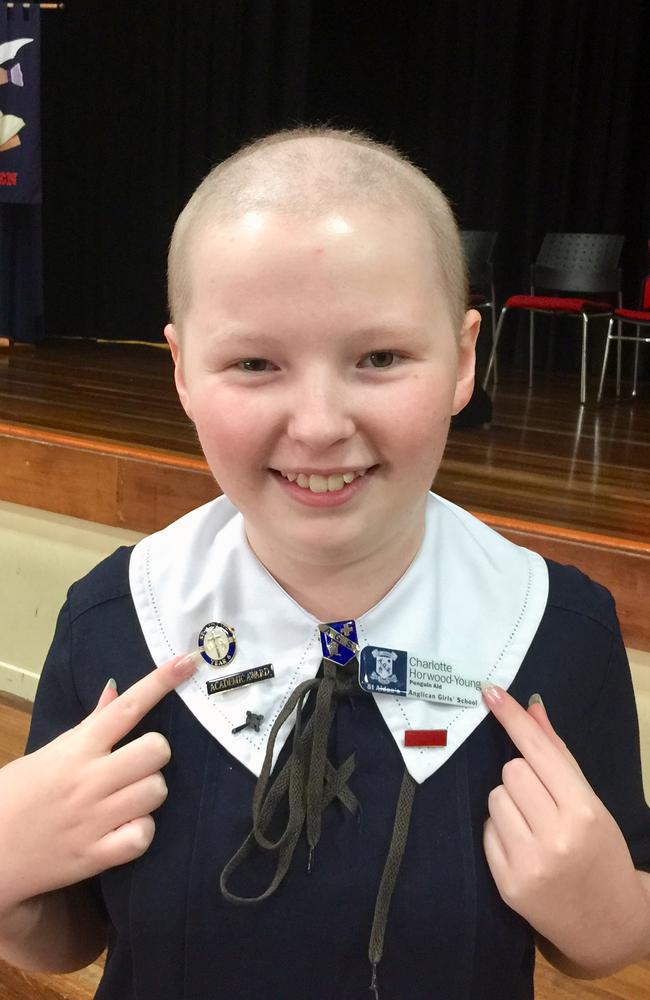
Eventually, the couple heard of an “extremely promising” immunotherapy treatment called Keytruda.
“We found a young guy in Sydney whose cancer was almost exactly the same as Charlotte’s, which in itself was remarkable, and he had a remarkable recovery,” Michael says. “We found out it was a nine course treatment taken every three weeks at $60,000 a dose and we said, ‘That’s fine, we’ll sell the house.’”
It is testament to the then-couple’s tenacity that Michael gave a full powerpoint presentation to the Children’s Hospital board advocating for Charlotte to be given the drug. It was approved, but as Michelle notes, “The wheels move slowly, and she died the day she was due to start it.”
“I always said the worst thing that could happen is if we discovered something that might help Charlotte and it would be too late, and that’s exactly what happened,” Michael says.
“It’s utterly heartbreaking, and that’s why we really believe in this centre. Because we believe that the difference it would have made to Charlotte would have been enormous.
“To have one place with some very smart people applying their knowledge of immunotherapy to the kid sitting right in front of them, and then delivering precision medicine to them, well, it would be amazing.”
On Charlotte’s last day, the day that she was due to start Keytruda (traditionally used to treat melanomas but proving potentially effective with Ewing’s sarcoma), her mother Michelle says they took it in turns to sit with her, or she and Michael sat together beside her.
“You know we never let her be alone, not at the hospital – her sister used to bring her chicken nuggets every night – not when she came home to rest, and not on that day, not for a second. When she died, I took out all her IVs, and we both picked her up and put her on the big couch and we just loved her.”
There were 400 people at Charlotte’s funeral, and her coffin was exactly as she instructed, “navy blue with rose gold accents”. A style queen, her mother smiles, to the end.
Charlotte never did come back as a demonic hedgehog, but she is very much a presence in many people’s lives, including Ian Frazer’s.
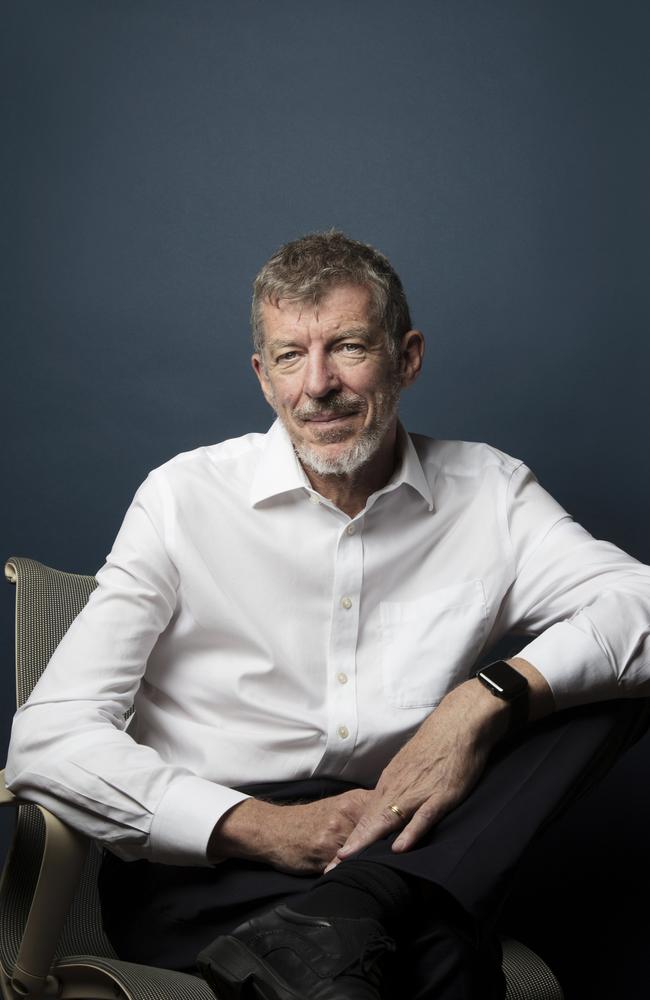
He knew Charlotte, and he knew her story. She was, he says, exactly the sort of child he hopes the centre can help.
Michelle says her daughter had a name for Frazer and all the people like him who tried to help kids with cancer: “good humans”.
The Ian Frazer Centre for Children Immunotherapy will be staffed by many of them; all good humans working together to buy kids like fun, feisty, fierce Charlotte Horwood-Young time, next time.
More Coverage
Originally published as ‘Trick the cancer’: Ian Frazer’s real hope ‘sniper cells’ could cure childhood cancer




